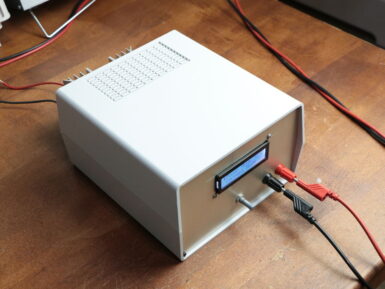
Arduino MKR Relay Proto Shield
Overview
The MKR Relay Protoshield allows you to easily add relays to your MKR board based project.
The shield provides two relays (Datasheet) called RELAY1 and RELAY2 commanded by pin 1 and pin 2 respectively.
The shield also provides an easy connection by means of screw terminal blocks to A1 to A4 analog inputs, I2C and supply voltages.
- Operating voltage 3.3V (supplied from the host board)
- Two relays with NO, COM and NC connections
- Works with battery powered board
- 8 positions screw terminal blocks for easy connections with A1 to A4 Analog input, SCL SDA for I2C, GND and 3.3V output
- 6 positions screw terminal blocks (NO, COM, NC for each relay)
- Carry current: 2 A
- Max. operating voltage: 24 VAC, 50 VDC
- Max. operating current: 1 A
- Max. switching capacity: 62.50 VA, 30W
- Proto area
You can find here your board warranty information.
Need Help?
- On the Software on the Forum
- On Projects on the Forum
- On the Product itself through our Customer Support
Conformities
Resources for Safety and Products
Manufacturer Information
The production information includes the address and related details of the product manufacturer.
Arduino S.r.l.
Via Andrea Appiani, 25
Monza, MB, IT, 20900
https://www.arduino.cc/
Responsible Person in the EU
An EU-based economic operator who ensures the product's compliance with the required regulations.
Arduino S.r.l.
Via Andrea Appiani, 25
Monza, MB, IT, 20900
Phone: +39 0113157477
Email: support@arduino.cc
Documentation
OSH: Schematics
MKR Relay Proto Shield is open-source hardware! You can build your own board using the following files:
Learn more
Get Inspired

Another Slot Car Lap Counter, but if I did it anyone can do!

If you need a device which draws a certain amount of current and power for testing, then GreatScott! has just the solution. His project uses an Arduino Nano, along with a separate IC and a voltage divider, to measure both current and voltage input from the power source. It then employs this data to properly adjust a MOSFET, dissipating the correct amount of voltage and power as required. Interface is handled via a rotary encoder and a 16x2 I2C LCD display, and the electronics are housed in a solid-looking enclosure. As seen in the video below, the adjustable constant load features an impressively large heat sink, needed to take care of the 30V and 20A that the setup is capable of drawing.








